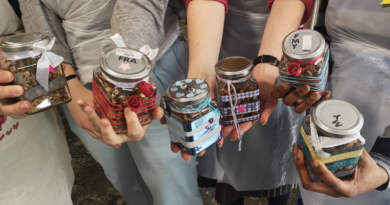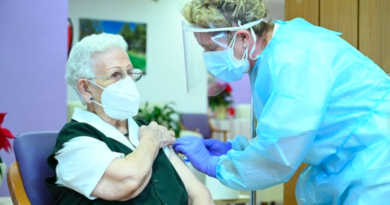King Leopold II was persuaded to sponsor this collection: Wolfers & Horta at Cinquantenaire
In 1885 a thirty-three-year-old Belgian man going prematurely bald and with a long, equine jaw was named the General Administrator of Foreign Affairs of the Congo Free State by King Leopold II. From a very young age Edmond van Eetvelde carried the spirit of adventure in his breast pocket. He moved to China in 1872 where he lived until 1878 trying to convince the mandarins to develop the railroad with the help of the Belgians. Through his wily diplomatic maneuvers, Edmond van Eetvelde gained the esteem of the Belgian monarch who was known to be dismissive of the new kind of art that was brewing in Europe, or Art Nouveau. It was van Eetvelde who lobbied the King to expand his views on art.
All of this I learned last week when I joined a guided tour organized by Arkadia ASBL at the Cinquantenaire Arts and History Museum to visit the Horta & Wolfers exhibition which has on display some of the most exquisite pieces of nineteenth and early twentieth century jewelry in the world.
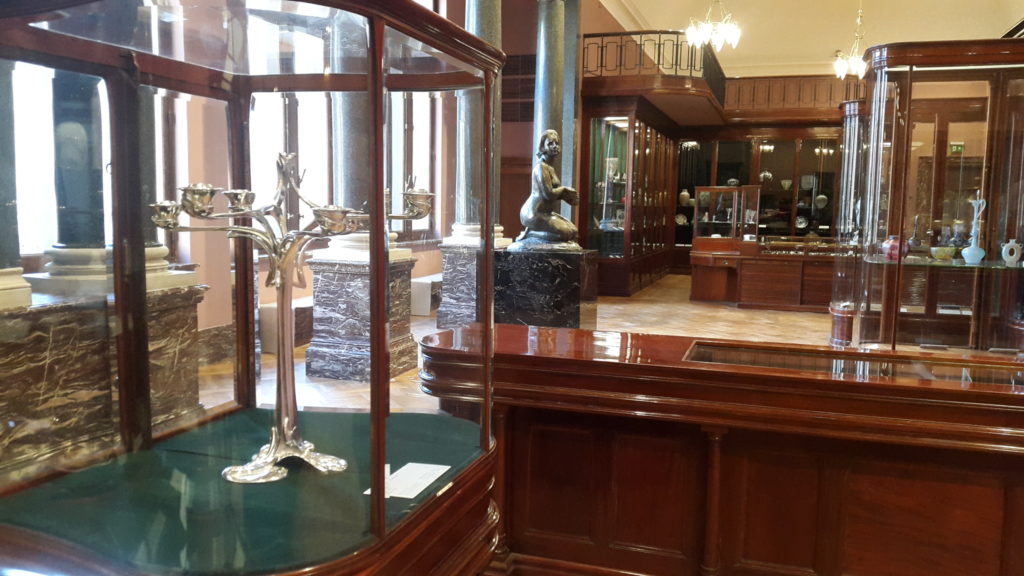
“The Wolfers family came originally from Germany,” said guide Cécile Dubois. “The patriarch, Louis Wolfers, came from the Mainz region to Belgium in 1850 and settled down with his family in Brussels. Their main business, at least in the beginning, was the sale of raw materials to silversmiths.”
Louis’s son, Philippe (born in 1858) joined the Fine Arts Academy in Brussels where master sculptor, Isidore De Rudder, took him under his wing and taught him how to work with metals, the craftsmanship that Wolfers would later develop with his own innovative style. From the early 1890’s he began to experiment with the different techniques available for ivory carving, and in 1897 he dazzled the world with his art. 1897 was the year in which Brussels hosted the Universal Exposition at the Cinquantenaire, yet Wolfers’s works were on display elsewhere.
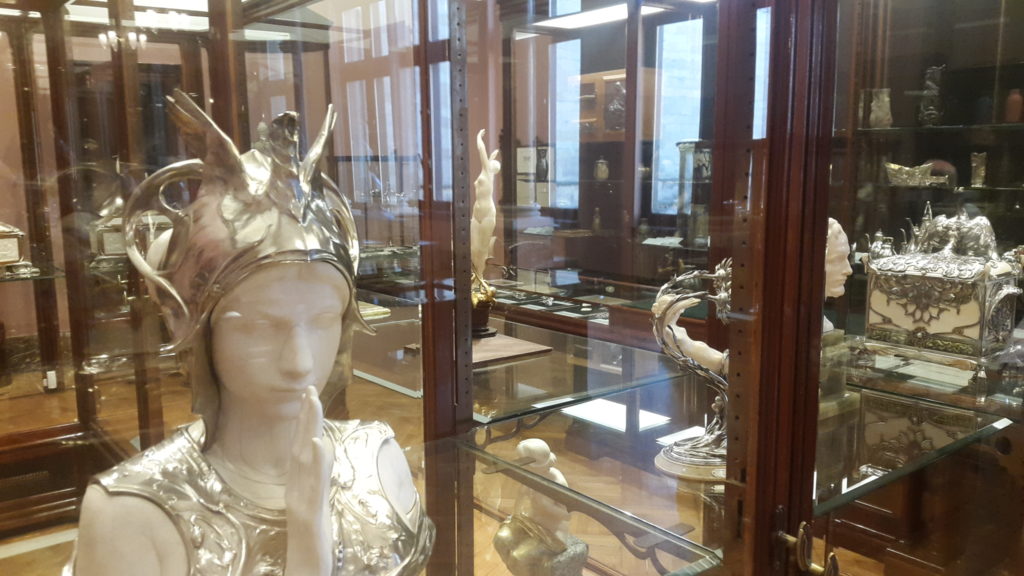
“Besides the Universal Exposition at the Cinquantenaire there was another one in Tervuren called the Colonial Exposition,” said Ms. Dubois, as the group stood in the upstairs hall surrounding a piece of ivory, a long tusk that must have belonged to a male the size of a small house. Half of the tusk was polished by Wolfers, its creamy white color becoming more noticeable, the other half still showing the original brownish tones seen in nature. Carrying the weight of the tusk on its back, stands a long-necked swan wrapping itself around the tusk.
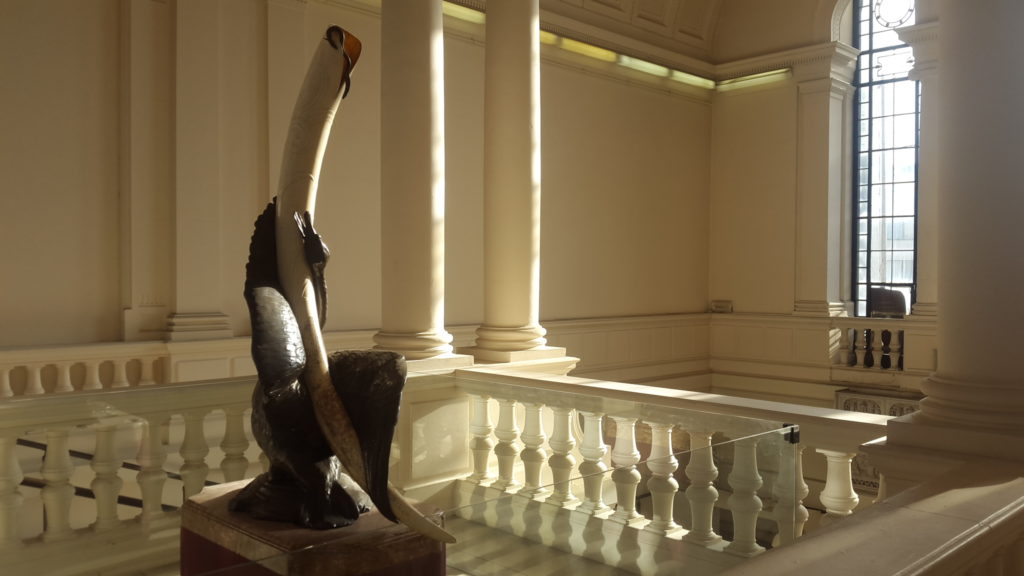
“The name of the sculpture is La caresse du cygne, or the Swan’s caress. A very apposite title, I’m sure you’ll all agree. Ivory was very expensive so the Belgian state had to sponsor some of the pieces. Again, Edmond van Eetvelde was the mastermind, the one who cajoled King Leopold II into opening his wallet.” La caresse du cygne was designed to be have a practical use, in this case a vase for long-stemmed flowers.
The exhibition includes the furniture that Victor Horta designed in 1909 for the Wolfers & Bros (Wolfers Frères) jewelry shop that opened in 1912 on Rue d’Arenberg in downtown Brussels. “Horta wrote in his journal that Philippe Wolfers was somewhat of a stone in the shoe, to say the least. He opposed many of Horta’s visions for the shop but eventually the architect stood his ground and this is what the world saw on opening day.” The building on Rue d’Arenberg still exists, with it’s large stylized window panes. It now houses the KBC bank.
Inside the display cabinets lie necklaces the shape of dragonflies, crabs, serpents, and other animals, all of them designed by Wolfers. Also jewelry boxes made in silver and ivory, carved with intricate details, precious stones adorning the corners.
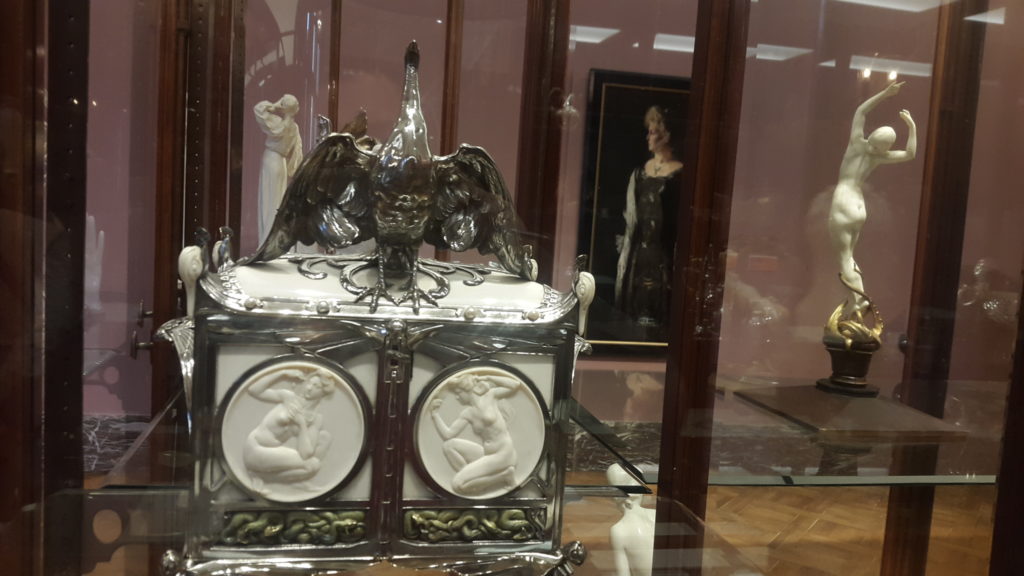
In 1925, four years before his death, Philippe Wolfers designed a complete set of cutlery and glasses for the Paris Universal Exposition. “It was called the Ensemble Gioconde. By then Wolfers had become more and more interested in geometric shapes. It was the boom of the Art Deco years. You can see all of the pieces have the shape of polygons, even the dishes.” The Ensemble was on display inside the Belgian Pavillion which was visited by Queen Elizabeth on June, 11th, 1925.
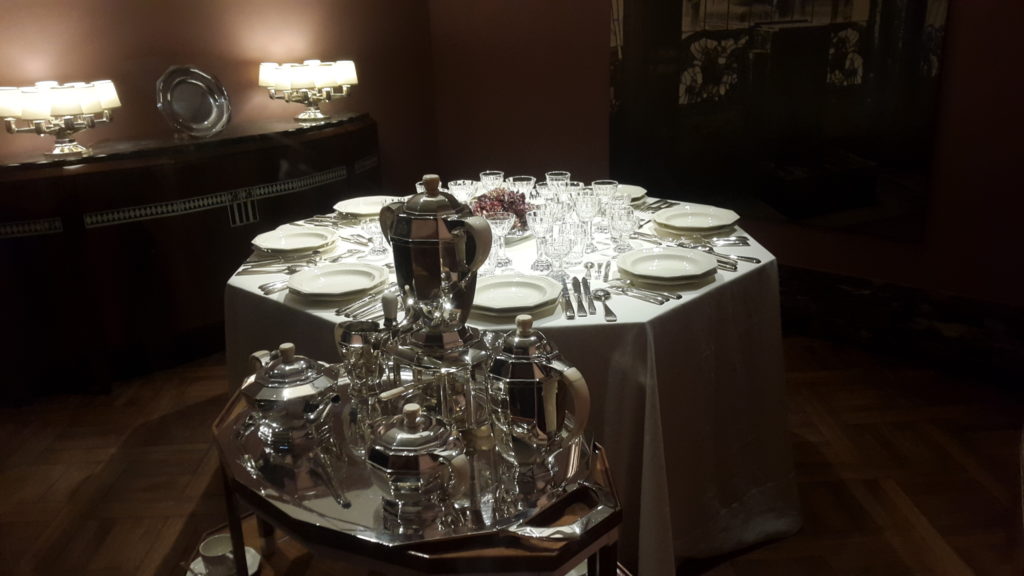
Philippe Wolfers’s son, Marcel, was also a well-known sculptor and the collection includes a very special vase made by him. “This vase was a gift from the people of Sweden to Belgium in 1935,” said Ms. Dubois. “And what was the occasion? A tragic one. Queen Astrid, who was Swedish, died in a car accident in Switzerland. She was only 29.”
The Horta & Wolfers exhibition runs at the Cinquantenaire Arts and History Museum until the 30th of December, 2018.

